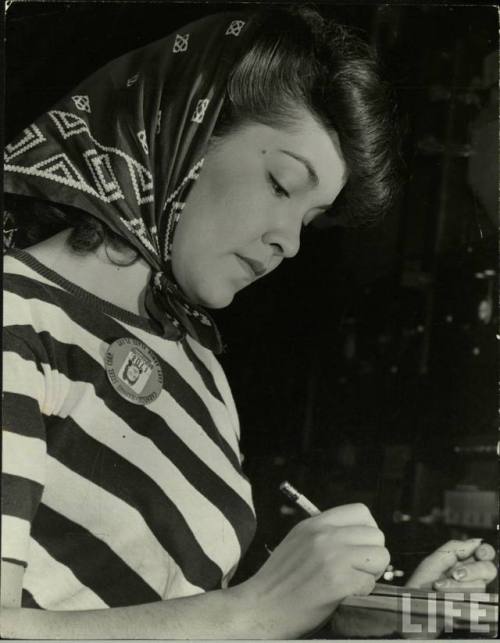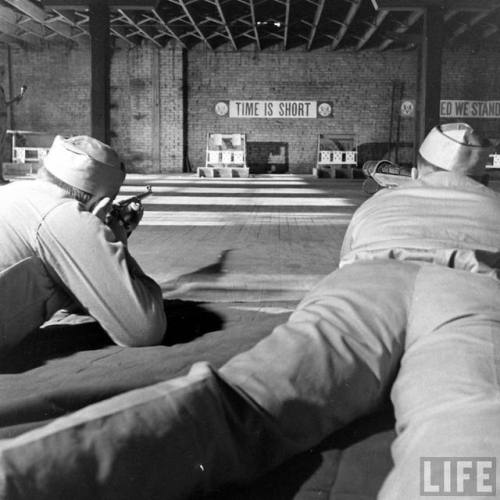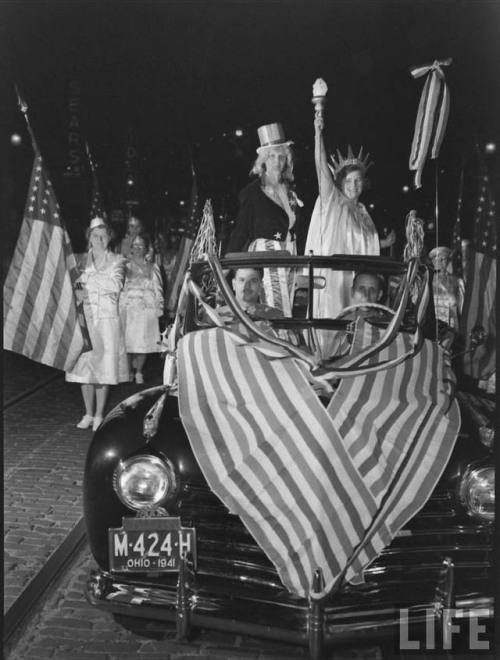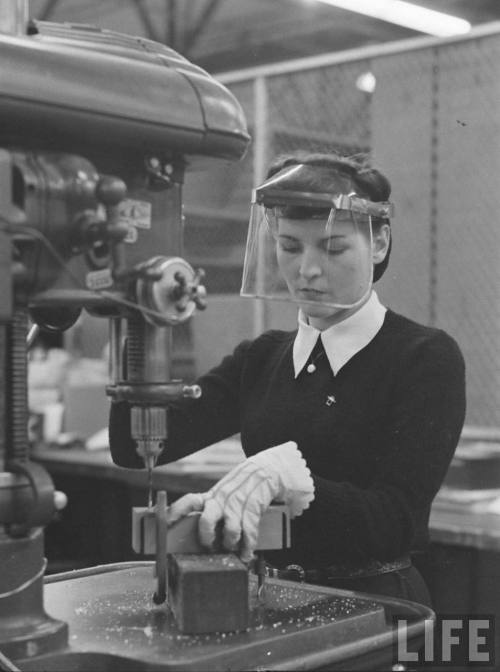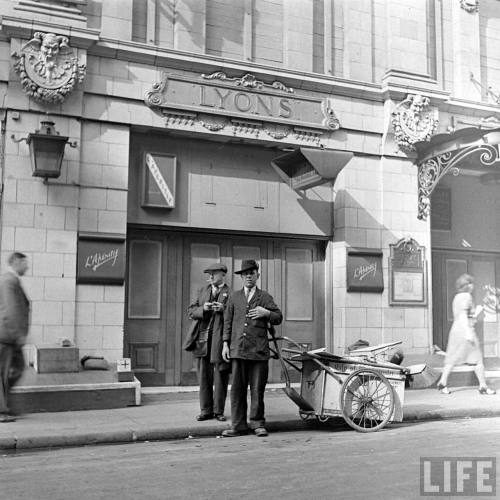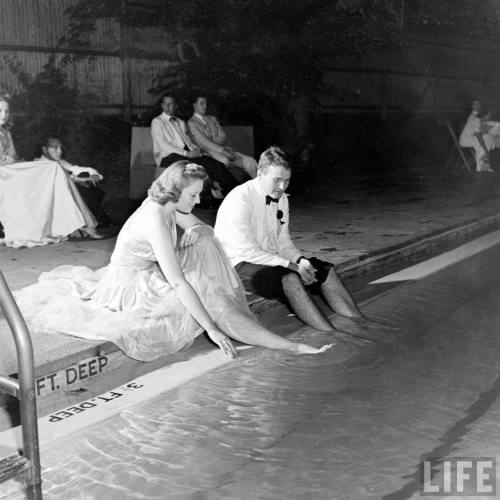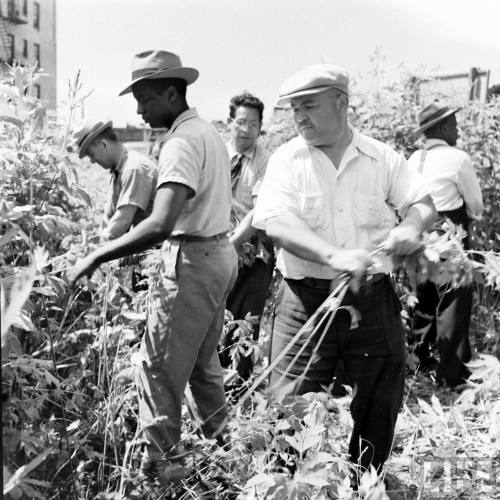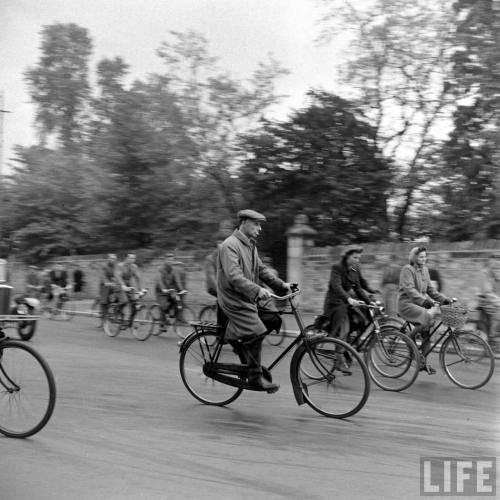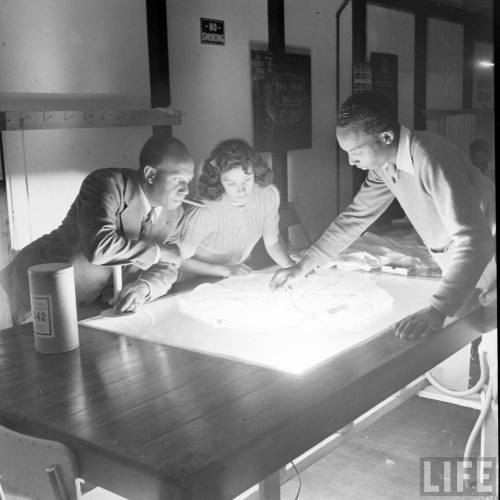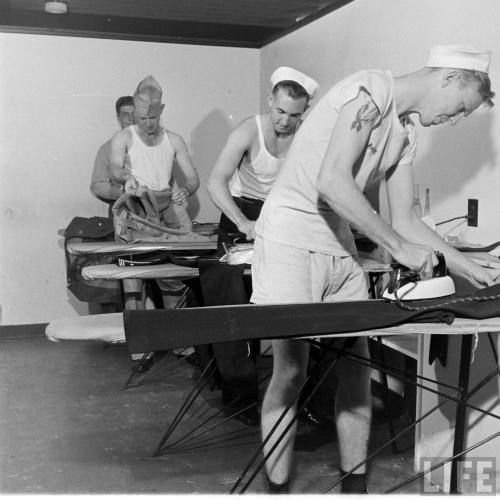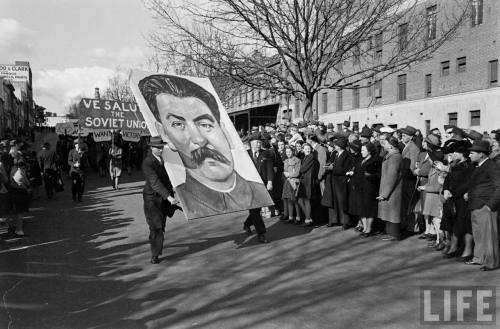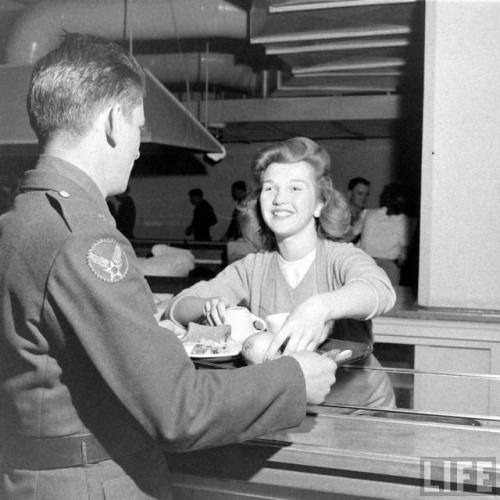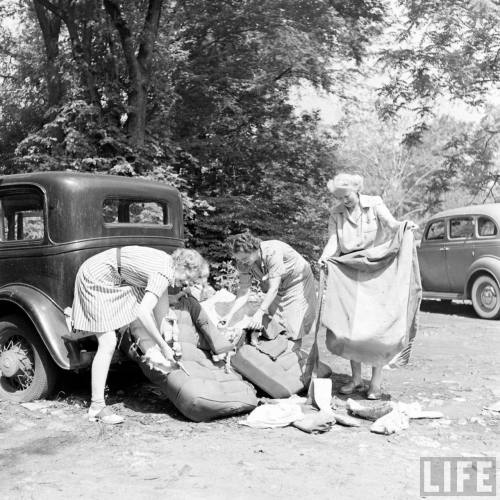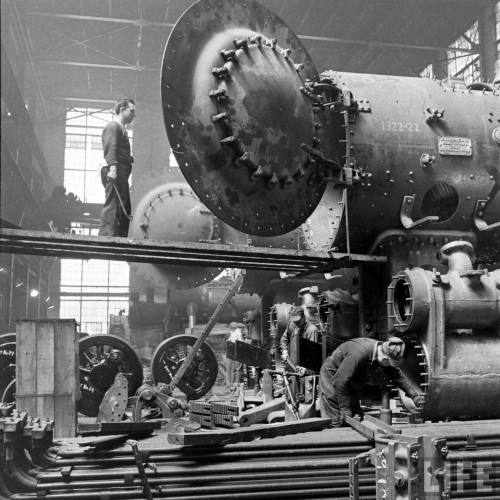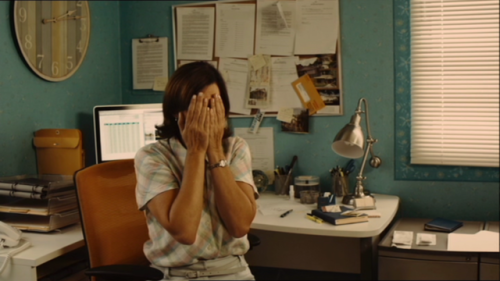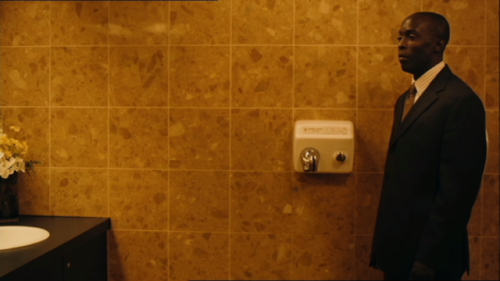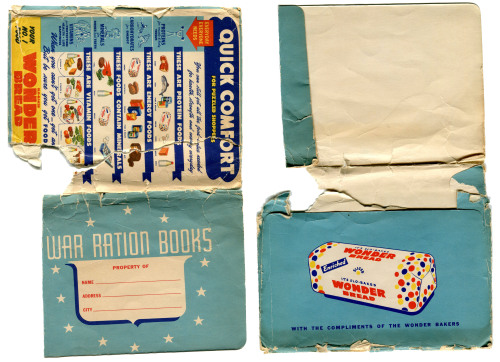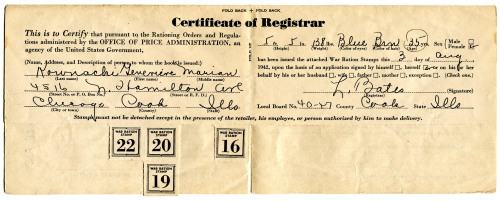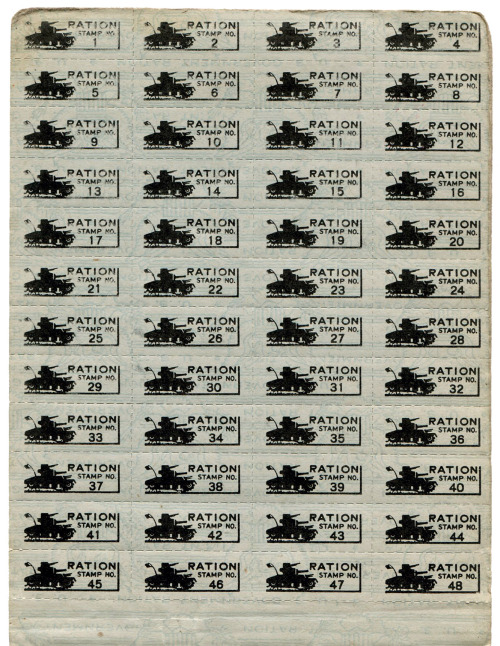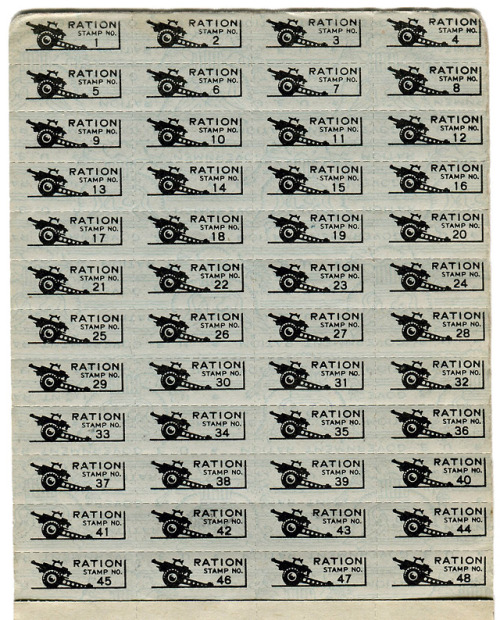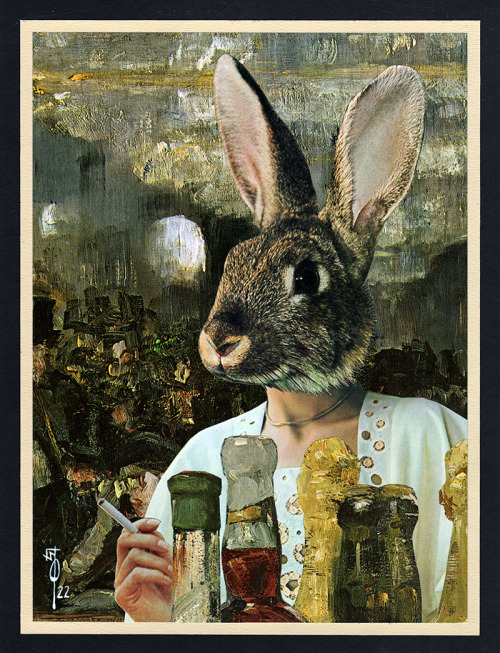#life during wartime
“This employee identification badge belonged to a female worker with employee number 9897 at the MacArthur Brothers Bag Loading Plant in Woodbury, New Jersey, in 1918. The plant produced smokeless propellant for shells used in World War I, and 4,000 of the 6,500 workers at the plant were women who weighed the powder and sewed the silk bags closed. The women traveled from nearby cities and towns to support the war effort, and lived at the complex in dormitories. The expansion of the scale of industry often meant that managers did not know every employee by sight, which created the need for employee identification in large plants, and concerns about espionage heightened this need during wartime.”
Post link
Wrapping up my WWII rations collection are coupons for the grocery store. While the initial thought would be that this was to make sure food was available for the troops (which in some cases was the fact), the real reasoning went beyond the actual food stuffs. It actually had to do with the processing and delivery. Like I had mentioned in my earlier rations posts, a big driving factor was the use of rubber. Hence limiting the amount of stuff you could buy meant that less stuff would have to be transported = less wear on precious tires. There was also the thought that less tin would be consumed by cans if people couldn’t buy as much. While true, I have read that the tin shortage wasn’t really as bad as the public thought. Either way, the rations did help cutback on cans.
This is by no means all of the paperwork involved with rations. As a matter of fact there was a War Ration Book No. 4 issued later on that I don’t have, and plans for a Book 5 as well. I like how over time the rations became more stylized, as you can see comparing Book 1 stamps with Book 3. (And Book 4 was even more so.) Besides the graphics the other thing I really like is the slogan that was used throughout the war years. “If you don’t need it, DON’T BUY IT.” Words that I still live by today.
Post link
Wallace Polsom, Life During Wartime: Flirting with Disaster (2022), paper collage, 20.7 x 24.8 cm.
Post link
Wallace Polsom, Life During Wartime: Sheltering in Place (2022), paper collage, 23.8 x 22.2 cm.
Post link
Wallace Polsom, Life During Wartime: A Small Act of Resistance (2022), paper collage, 21.9 x 28.7 cm.
Post link

